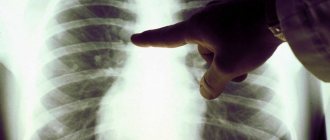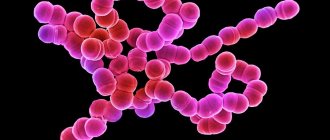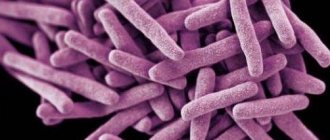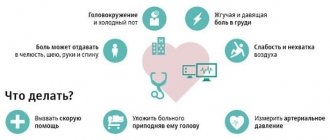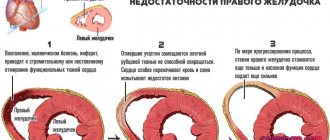Leukemia is a malignant lesion of bone marrow tissue that disrupts the functioning of this system, as a result the number of white and red cells loses its ratio and the person begins to die. The disease can be diagnosed at different ages, so it is very important to pay attention to the first symptoms in order to consult a doctor in time. Today, leukemia treatment abroad is carried out using new technologies, so one can hope for good results.
In the initial stages, if a person has a strong body, the disease may not manifest itself in any way. There may be some minor deviations from the norm that no one will even pay attention to. The real symptoms appear much later. Some people have been sick for years and don’t even know it, and when they turn to a specialist, the disease is already at an advanced stage.
To prevent this from happening, you should definitely undergo a check-up once a year. The procedure does not take much time, but with its help you can determine what deviations from the norm exist in the body.
At the initial stage of leukemia, you may notice the appearance of a strange cold. Strange because it has nothing in common with her except the symptoms.
The person notices:
- drowsiness;
- weakness;
- muscle pain;
- headache;
- swelling of the mucous membrane;
- ocular tearing.
Thinking that all these points accurately indicate a viral disease, people actively take a number of drugs,
which eliminates only the physical manifestation of the problem and blurs the symptoms. For a while, the problem really does not make itself felt, and the person is convinced that his cold has been cured, but only until the leukemia moves to the next stage, where the symptoms have a completely different character.
Leukemia in children
Leukemia is the most common form of cancer in children and adolescents, occupying one of the three leading positions in terms of frequency in various countries. Approximately 75% of leukemia in children is acute lymphoblastic leukemia. This form is most often diagnosed in children aged 2 to 4 years. Boys get sick more often.
Acute myeloid leukemia takes up most of the remaining 25%. This type is common in a wider age range, but the incidence of its detection increases slightly in the first 2 years of life, as well as in adolescents.
In the period from 2006 to 2010, the incidence of acute lymphoblastic leukemia among teenagers 15-19 years old was twice as high as the incidence of acute myeloid leukemia. At the same time, in the age group from 25 to 29 years, the incidence of acute myeloid leukemia was 57% higher than lymphoblastic leukemia.
Bone marrow transplantation
The method refers to immunotherapy and is a transplant of bone marrow or its stem cells. Such operations are performed only in the most advanced clinics, of which there are a small number. Patients all over the world come to them. For the operation itself, biological material from a close relative is mainly used, but often strangers become donors.
Attention! The clinics give cancer patients the opportunity to have healthy offspring after recovery. This is done by collecting and storing healthy cells responsible for reproduction. Unfortunately, such operations are very expensive.
Causes
It has not yet been possible to establish the specific cause of the development of leukemia. There is some connection between the disease and chromosomal abnormalities. In particular, in all patients with chronic myeloblastic leukemia and in some patients with the acute form of this disease, a pathological “Philadelphia chromosome” is detected in leukocytes and bone marrow. This pathology belongs to the category of acquired ones. It is not congenital and is not transmitted from parents to children.
An association with acute myeloblastic leukemia has also been found for the following diseases:
- Down syndrome;
- Bloom's syndrome;
- Fanconi anemia;
- Wiskott-Aldrich syndrome and other immunodeficiency conditions.
Risk factors for developing leukemia are:
- Radiation. People exposed to high doses of radiation have an increased risk of developing various forms of leukemia. A number of studies are currently being conducted to determine the extent to which x-rays (x-rays and computed tomography) influence the development of leukemia;
- Smoking increases the risk of developing acute myeloid leukemia;
- Petrol. Long-term exposure to gasoline vapors increases the risk of developing chronic or acute myeloid leukemia;
- Chemotherapy. Cancer patients treated with specific anticancer drugs have an increased risk of developing acute myeloblastic or lymphoblastic leukemia;
- Myelodysplastic syndrome and other hematological diseases.
The presence of one or even several of the factors listed does not mean that a person will develop leukemia. Most of these people never develop symptoms characteristic of leukemia.
Briefly about leukemia: what is it and how long do people live with it?
What does leukemia mean? This is when the normal process of maturation of white blood cells is disrupted and turns into a malignant form.
White blood cells include:
- granulocytes;
- lymphocytes;
- basophils;
- neutrophils.
and so on. According to this list, the forms of leukemia also differ, each of which requires its own individual treatment. However, before starting to develop a treatment program, the patient must be clearly diagnosed with a specific form of the disease.
Symptoms
Symptoms of leukemia vary depending on the type and course of the disease. Leukemias are classified into 4 main groups:
- Acute myeloblastic leukemia
- Chronic myeloblastic leukemia
- Acute lymphoblastic leukemia
- Chronic lymphoblastic leukemia
In addition, the course of leukemia largely depends on factors such as the age of the patient and the cause that led to the disease.
Symptoms common to all types of leukemia are:
- Frequent infectious diseases
- Cold, fever
- Chills
- Loss of appetite, exhaustion, weight loss
- Abdominal pain
- Enlarged lymph nodes
- General malaise
- Frequent pain in bones and joints
Classification
Depending on the number of leukocytes in the peripheral blood, several types of the disease are distinguished. These are leukemic, subleukemic, leukopenic and aleukemic leukemia. According to developmental characteristics, acute and chronic pathologies are distinguished. The first accounts for up to 60% of cases, with it there is a rapid increase in the population of blast cells that do not mature.
The acute type of the disease is divided into types:
- lymphoblastic – diagnosed in 85% of cases in sick children 2–5 years old. The tumor is formed along the lymphoid line and consists of lymphoblasts;
- myeloblastic – damage to the myeloid line of hematopoiesis, noted in 15% of cases in children with leukemia. With it, myeloblasts grow. Leukemia of this type is divided into myelomonoblastic, promyelocytic, monoblastic, megakaryocytic, erythroid;
- undifferentiated - characterized by cell growth without signs of differences, represented by homogeneous small stem blasts.
The disease develops slowly and is characterized by excessive growth of mature inactive leukocytes. In the lymphocytic form of the disease, B and T cells develop (lymphocytes responsible for the absorption of foreign agents), while in the myelocytic form, granulocytes develop.
When classifying chronic leukemia, juvenile, childhood, adult types, myeloma, and erythremia are distinguished. The latter is characterized by leukocytosis and thrombocytosis. In the myeloma type, plasma cells grow and immunoglobulin metabolism is disrupted.
Symptoms of leukemia in children
When a diagnosis of acute leukemia is made, symptoms in children manifest themselves as neurological disorders (drowsiness, lethargy, loss of appetite, lack of body weight), after which the child’s condition sharply worsens and a characteristic picture of the disease develops.
If leukemia is suspected in children, symptoms may manifest as:
- Vomiting
- Loss of appetite
- Loss of body weight for no apparent reason
- Headache
- Uncontrolled seizures accompanied by skin manifestations (subcutaneous hemorrhages)
In some cases, there is an enlargement of the liver and spleen, which is externally manifested by protrusion and thickening of the abdomen.
Children with leukemia are more susceptible to various infectious diseases, and the use of antibacterial drugs may not lead to an improvement in the patient's condition.
Such patients are more difficult to tolerate even minor scratches and cuts. Blood clots much longer than in a healthy person, which leads to frequent bleeding.
If a child with leukemia has pain in the joints and bones, this may indicate that cancer cells have spread to these areas of the body.
Why does this disease occur?
Leukemia is, perhaps, one of those diseases about which we can say: everyone gets sick
, regardless of age, gender, social status, religious affiliation or other factors.
What causes leukemia? The reasons include the following:
- Ionizing radiation.
- Viral infection. It is necessary to clarify here: cells degenerate into malignant ones only in some cases; The greatest danger of such degeneration exists when infected with HIV.
- Heredity. If the patient had relatives in his family who had leukemia, the patient himself increases the likelihood of developing such an illness.
- Genetic damage.
- Bad habits, in particular smoking.
Now you know what causes leukemia. There are reasons that a person can prevent himself - for example, ionizing radiation, giving up bad habits, strengthening the immune system in order to prevent viral and other diseases; if they do occur, timely and adequate treatment is required.
However, a person cannot influence genetics and heredity.
Symptoms of leukemia in adults
Symptoms of leukemia in adults are similar to the symptoms described above in children. Leukemia begins with flu-like manifestations. The patient is susceptible to frequent infectious diseases, fever, chills, and increased fatigue.
Frequent infections are a consequence of dysfunction of leukocytes. Pathological immune cells, produced in large numbers, are inactive and are not able to adequately fight viruses and bacteria that enter the body. The accumulation of such cells in the red bone marrow causes decreased platelet production. As a result, their deficiency leads to increased bleeding and the appearance of subcutaneous hemorrhages (petechial rash).
Symptoms of acute lymphoblastic leukemia at an early stage manifest themselves in the form of ARVI (general malaise, weakness, fever). Later, characteristic signs of cancer appear. Pain in bones and joints gradually intensifies and becomes more severe than in children. There is a deterioration in appetite, weight loss and abdominal pain due to an enlarged liver and spleen. The patient's lymph nodes are enlarged. Their palpation may be painful. Also, bleeding from places of injury and cuts increases.
Symptoms of leukemia develop depending on the location of the accumulation of pathological cells. As leukemia progresses, cerebral symptoms appear, characterized by blurred vision, vomiting and vestibular disorders. All patients develop shortness of breath and prolonged coughing attacks.
Symptoms of acute leukemia include:
- Headache
- Vomit
- Confusion
- Decreased muscle tone, inability to control limb movements
- Convulsions
Depending on the organ affected, there are signs of damage to the digestive system, kidneys, lungs, heart and genitals.
The difference between acute leukemia is the rapid development of symptoms and, as a result, rapid diagnosis of the disease. In patients with chronic leukemia, symptoms appear only in late stages, which leads to delayed diagnosis. Based on their own experience and numerous studies, researchers have found that pathological leukocytes are detected in the blood of patients as early as 6 years before the development of clinical manifestations of leukemia.
The symptoms that characterize chronic leukemia develop gradually, which makes this disease unlike other types of cancer. The initial signs of chronic leukemia are:
- Frequent infectious diseases (a decrease in the level of gammaglobulins, which are responsible for maintaining the functioning of the immune system, leads to the development of its failure and makes it impossible to resist pathogens)
- Bleeding, difficult to stop bleeding (due to a decrease in the number of healthy platelets)
- Enlarged spleen
- Feeling of fullness in the stomach, rapid satiety
- Unreasonable weight loss
In patients with chronic myeloblastic leukemia, clinical manifestations develop at later stages. Among them are (in addition to those described above):
- High levels of white blood cells in the blood and bone marrow
- Increased sweating, especially at night
- Headache, fever
- Pale skin
The only early sign of chronic lymphoblastic leukemia is an elevated level of lymphocytes in the blood. As the disease progresses, patients note a deterioration in their health and enlargement of the lymph nodes.
When moving to later stages, anemia joins the described symptoms. Due to the insufficient amount of antibodies produced to pathogenic microorganisms, the risk of developing infectious complications increases significantly. This stage is also characterized by enlargement and tenderness in the spleen area.
A pathologically high level of white blood cells can lead to the development of visual impairment (retinal hemorrhage), the appearance of ringing in the ears, the appearance of neurological changes, prolonged erection (priapism) and the development of stroke.
Diagnostics
Various laboratory tests can detect blood cancer in men. It is effective to conduct a comprehensive examination. The following methods are used:
- general blood analysis;
- blood chemistry;
- bone marrow and cerebrospinal fluid analysis;
- immunohistochemistry;
- cytogenetic analysis.
The presence of pathology is indicated by such indicators as a reduced number of leukocytes, platelets, red blood cells, insufficient hemoglobin levels, and increased ESR.
To analyze other biomaterials, bone marrow puncture is performed, material is collected from lymph nodes, spleen, and skin lumps.
After identifying blood cancer, it is necessary to determine the pathological changes that have occurred in various organs and systems of the man’s body due to oncology. For this purpose, research methods such as ultrasound (examination of the kidneys, spleen, liver), radiography (examination of the skeletal system), and magnetic resonance imaging (examination of the brain) are used.
Treatment
Treatment of leukemia should be carried out only in specialized centers by a doctor who has the appropriate certificate. If it is not possible to follow these rules, the attending physician must discuss and draw up a treatment plan together with such a specialist.
The choice of treatment plan depends on the type of leukemia, the patient's age, the presence of abnormal white blood cells in the cerebrospinal fluid, and previous treatment.
Treatment methods
The main methods of treating leukemia include:
- Chemotherapy
- Biological treatment method
- Radiation therapy
- Bone marrow (stem cell) transplantation
If the disease is diagnosed in late stages and the patient has an enlarged spleen, then an additional treatment method is removal of the spleen.
Treatment of patients with acute leukemia must begin immediately. The goal of therapy is to achieve remission. Subsequently, after the disappearance of clinical manifestations of the disease, the patient continues to receive preventive treatment. This is called maintenance therapy.
Patients with asymptomatic chronic leukemia may not require immediate treatment. Such patients are prescribed observation and careful monitoring of their condition. Treatment begins when symptoms of the disease appear or worsen.
A number of large clinical studies are currently underway on the use of new methods and drugs for the treatment of leukemia. At the request of the patient, he can take part in the study. For more information, consult your doctor.
In addition to the main course, the patient may need to take analgesics and other symptomatic treatment to combat the manifestations of the disease, side effects of chemotherapy or normalize the emotional state.
Chemotherapy is the most common treatment for leukemia. It involves the use of drugs to suppress the growth or destruction of altered cancerous white blood cells. Depending on the type of leukemia, the patient is prescribed single or multicomponent chemotherapy.
Drugs can be administered using various methods, including directly into the spinal canal. This can be done in two ways:
- Spinal puncture (administration of a drug through a special needle in the lower, lumbar, part of the spinal canal)
- The Ommaya reservoir is a special catheter installed in the spinal canal, the end of which is brought out and fixed on the scalp. It allows for repeated administration of drugs without the need for repeated punctures of the spinal canal
Chemotherapy is carried out in the form of cyclic courses: between courses of treatment there are necessarily recovery pauses. Chemotherapy can be administered on an outpatient basis or at home (depending on the type and methods of drug administration).
A new word in the treatment of leukemia - targeted therapy - is a method that affects only pathological cells without harming healthy tissues of the body. The first approved targeted therapy was called Gleevec.
Biological methods
This method involves stimulating natural defense mechanisms to fight cancer. Depending on the type of leukemia, the following are used:
- Monoclonal antibodies (bind to abnormal white blood cells in the blood and bone marrow and cause their death)
- Interferon (a natural drug that inhibits the growth of cancer cells)
Radiation therapy (radiotherapy)
This is a method based on the use of high-frequency radiation to target cancer cells. During radiation, a special device sends beams through the spleen, brain and other parts of the body where leukemoid cells accumulate. Some patients receive whole body radiation. Typically, total radiation is given before a bone marrow transplant.
Stem cell transplant
Stem cell transplantation allows treatment with increased doses of chemotherapy or enhanced radiation therapy. After both pathological and normal cells have been destroyed, healthy stem cells are transplanted into the bone marrow. Subsequently, the patient is transfused with stem cells through a catheter inserted into a large vein (in the neck or chest area). The transplanted cells develop into new, healthy blood cells.
Transplantation methods include:
- Bone marrow transplant
- Peripheral blood stem cell transplant
- Umbilical cord blood transfusion (for children without a suitable donor)
In addition to donor cells, the patient's own cells can be used. Before treatment begins, stem cells are collected from the patient's bone marrow. After chemotherapy or radiotherapy, the cells are thawed and transplanted back to the patient.
Leading clinics in Israel
Assuta
Israel, Tel Aviv
Ikhilov
Israel, Tel Aviv
Hadassah
Israel, Jerusalem
And, despite the fact that cancer is not considered a hereditary pathology, experts have discovered the existence of a predisposition to certain forms of cancer in some people.
A list of factors that can lead to blood cancer include:
- Ionizing radiation carried out during radiation therapy or after any man-made disasters;
- Bad habits. Alcoholic drinks and tobacco smoking provoke an increase in intracellular mutations;
- The occurrence of blood cancer is promoted by chronic diseases of the hematopoietic system, Li-Fraumeni syndrome, Down syndrome and HIV infection;
- Human contact with benzene, which is actively used in chemicals. industry.
Side effects of treatment
| Chemotherapy | A side effect of chemotherapy is damage to:
| ||
| Biological methods | Biological methods may cause flu-like symptoms, rash, and itchy skin. | ||
| Radiotherapy | The consequences of radiotherapy are: feeling of fatigue, redness, dry skin. | ||
| Stem cell transplantation | The most severe complication is graft-versus-host disease. This condition occurs in patients who have received donor stem cells. It manifests itself as acute irreversible damage to various organs, including the liver, skin and gastrointestinal tract. The effectiveness of treatment for this condition does not exceed 10-15%. | ||
Other consequences depend on the area of irradiation.
Forecast
The prognosis for leukemia depends on many factors: the patient’s age, the speed of development of the disease, the specific type of leukemia, the time when chemotherapy began, the body’s response to treatment, etc.
If we are talking about a patient no older than 60 years, with standard treatment the survival period is no more than 6 years. If the patient has crossed this age limit, we can say there is a 10% chance that the patient will live 5 years.
Sometimes relapses occur after treatment. In such patients, the prognosis is always worse, although there are exceptions - when the body responds better to therapy during the treatment of a relapse than during the primary treatment of the disease.
To summarize, let's say this: everything depends on the specific case and predictions are made by doctors on a deeply individual basis.

